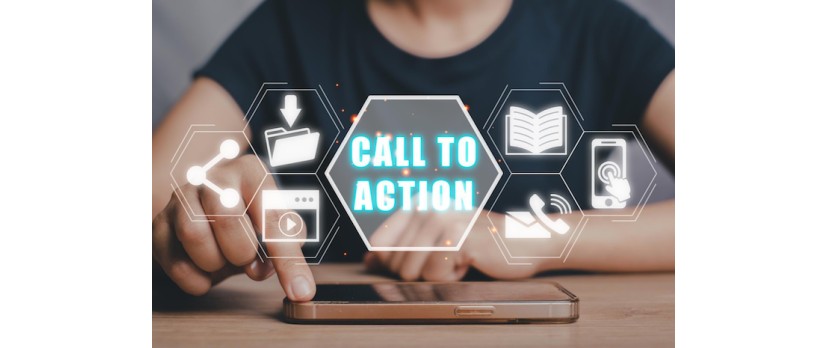Inspiring web visitors to convert takes much more than presenting them with an impressive value proposition or offering them a good deal.
Yes, quality, convenience, pricing, and your brand's reputation are all factors that determine your target audience's willingness to buy from your business. But, truthfully, you can outperform your competitors in any (or all) of these categories and still fail to sell your solutions if your calls to action aren't effective.
Naturally, there's a lot of advice available online regarding how to optimize CTAs. From prescriptive tips for using specific colors to widely adopted copy choices ("Buy Now," "Read More," "Sign up"), there's more than enough solid advice to shape your CTA optimization strategy.
Nevertheless, if you're after above-average conversion rates, none of these generalized tips will cut it. Instead, you'll need to tap into the psychology of highly effective CTA buttons and create conversion elements that genuinely speak to your ideal audience.
So, without further ado, here's how you can use color, shapes, and words that drive conversions to help your business thrive.
The Green vs. Red Debate
CTA button color has always been a fascinating topic. And it's no surprise that some of the earliest UX design studies focused on the matter.
During the early 2010s, several trustworthy resources have discovered that (in general) red buttons convert 5% to 34% better than their green counterparts.
True, these findings indicate a possible advantage a specific hue could provide when aiming to drive conversions. However, these rules are not necessarily applicable in 2025 and beyond.
So, why is this the case? And how should you approach color choice when designing CTA buttons meant to engage and convert?
Well, the first thing to consider is that the color of your CTAs doesn't exist in limbo. Instead, you should consider how it interacts with the remaining elements in your web design (primarily your brand's visual identity) and whether there are additional assigned meanings you need to consider when picking a hue for your button.
For example, color psychology proposes that colors affect people's moods and actions. Furthermore, it suggests that people inherently assign specific meanings to certain colors.
Naturally, you can consider these widely accepted conventions when choosing CTA button colors. However, if you're after impressive conversion results, the better way to approach CTA button design is to pay attention to contrast and context.
By opting for a hue that aligns with your site's aesthetic appearance yet provides sufficient contrast against its background, you'll ensure that the button pops on your site and engages web visitors' attention. You can also use this tactic to transform it into an attractive web page element that is far more likely to generate sales than a component that blends into its background (or, worse yet, clashes with it, creating an unappealing overall look).
For inspiration, check out how Sewing Parts Online solves this issue. By choosing the same shade of red for its logo and CTA buttons, this brand creates a cohesive yet engaging look that works — even despite the busy web design that stems from the wide variety of items the ecommerce shop offers.
Source: sewingpartsonline.com
Shape, Size, and Positioning
Another common question about CTA button design is whether shape, size, and positioning impact effectiveness.
Just as with color, there's no definitive answer to this question.
Positioning, for instance, has been proven to have a tremendous impact on conversion potential. While some resources suggest highly specific placement for CTAs, the truth is that the ideal place to display these elements will depend on several factors.
For one, internet user behavior research suggests that people spend 57% of their page-viewing time looking at content in the topmost section of a website. But that doesn't mean that you shouldn't incorporate CTA buttons lower down on your home or landing pages.
On the contrary, to drive conversions, the best thing you can do is align CTA button positioning with your target audience's position in the buyer's journey.
So, opt to display CTAs in logical spots depending on the content they're preceded by.
For instance, check out how Code Two positions CTAs on its homepage. Knowing that each value proposition promises different user benefits (and its prospects may be attracted by different value props), this brand supplements each content section with different CTAs. This ensures a hyper-relevant browsing experience and maximizes the chances of the brand's potential customers moving down the sales funnel.
Source: codetwo.com
As for shape and size, you can use scientific or user behavior research to guide your decision-making process.
For instance, a 2023 study found that curved digital marketing design elements yield higher click-through rates than their sharp-angled counterparts. Nevertheless, this doesn't necessarily mean you must opt for this design direction to yield high website conversion rates.
Instead, just as you'd do with color, produce and create CTA buttons that align with your brand's visual identity and your prospects' preferences.
When in doubt, a simple A/B test can always be helpful — especially when comparing design changes such as button shape and size.
FOMO vs. Trust-Inspiring Copy vs. Benefit-Driven Language vs. Aspirational Outcomes
If there's one aspect of effective CTA button design that drives conversions, it has got to be language.
On the whole, you're likely aware that engaging copy drives conversions.
Nevertheless, CTA buttons (usually) provide limited space to exercise your creativity. Furthermore, you might think that the best way to get web visitors to take action is to present them with familiar phrases that are super clear regarding the outcome they lead to.
But is going with the flow the best possible course of action?
The truth is, it depends on your intentions and your target audience's preferences.
If you wish to tap into psychology to boost conversion rates, then the best thing you can do is not follow any advice blindly. Instead, research your ideal customers' wants, needs, and aspirations and align CTA wording with those.
There are several effective CTA copy guidelines you can choose from to yield impressive results.
For example, relying on short, action-oriented language is always a solid option, as it places your web visitors in a subject position. It invites them to take agency over their buyer's journeys. And it reminds them that they hold the keys to resolving their pain points.
Datto's "Request Trial," "Request Pricing," and "Join the partner community" are all excellent examples of how inspiring simple CTAs can be when they present web visitors with a clear (and wanted) outcome of clicking a button.
Source: datto.com
Alternatively, you may want to take an approach that relies more heavily on psychology. In that case, use emotional language to boost the conversion potential of CTA buttons.
Scientific data suggests that people make the majority of their buying decisions subconsciously. Moreover, people's fears and aspirations play a key role in determining their purchasing behavior.
So, if you wish to nudge your target audience closer to a conversion, why not design CTAs that will convince them to click by aligning the action with a desired outcome?
Check out how Pureology does it. Understanding that its target audience wants custom hair solutions, it invites web visitors to take a quiz and find out the ideal routine for their desired effects. This is not just a creative method of assisting consumers along their product discovery journey — it also works because it assigns a tangible value to clicking, without requiring the buyer to take risks like buying.
Source: pureology.com
Supporting Trust-Boosting Elements
The success of your CTAs at driving conversions won't just depend on design or copy. Their effectiveness will also depend on the elements that surround them.
Generally, today's consumers often have doubts about converting. In fact, many fail to follow through with a purchase due to perceiving a conversion as a risk.
To combat this, surround your CTA buttons with design elements that will build brand trust. Show your target audience that they can have faith in your brand to put their needs and satisfaction first.
The great news is that this is super easy to do.
Something as simple as using trust signals in proximity to your CTA buttons can be more than enough to convince web visitors to buy. For a great example, take a look at how OrthoBracing highlights the dependable payment methods it accepts, its extended warranty, and third-party certification.
Source: orthobracing.com
Or, you could achieve a similar effect with microcopy.
Highlighting the fact that a free trial doesn't require card information — as Memtime did — or that customers can cancel their subscriptions at any time are both excellent methods of emphasizing brand reliability and using it to maximize CTA click-through rates.
Source: memtime.com
Visual Cues
Lastly, if you're looking for psychologically-backed design tactics to drive user action, don't forget that UI feedback in CTA design can be just as crucial as wording or placement.
Designing your CTA buttons to feature subtle yet engaging hover and click effects can be a marvelous way to boost their effectiveness at driving conversions.
The effect of interactivity engages web visitors 52% better than its non-interactive counterparts. Additionally, it makes them feel like they're in control of how they proceed.
Furthermore, interactive visual cues can build anticipation, especially when a change in color or shape signals to potential customers that they've almost arrived at a point in the sales funnel where their pain points and frustrations will be removed.
For instance, if you check out the Medical Alert Buyers Guide homepage, you'll see that the fact that the primary CTA changes from orange to blue on hover provides valuable click feedback, which instantly makes web users feel more convinced that they're on the right road toward solving their pain points.
Source: medicalalertbuyersguide.org
Final Thoughts
The beauty of high-converting CTAs is that you can experiment with numerous design strategies and yield impressive results.
Nevertheless, to maximize your chances of creating calls to action that convert, do your best to rely on consumer psychology. More precisely, conduct in-depth audience research, learn what drives your prospects' purchasing decisions, and adapt your CTAs to align with your ideal customers' desired outcomes.
Then, test the changes you've made, to ensure the best possible outcomes and uncover any additional potential optimization opportunities that could help you get even further in elevating sales.


Login and write down your comment.
Login my OpenCart Account